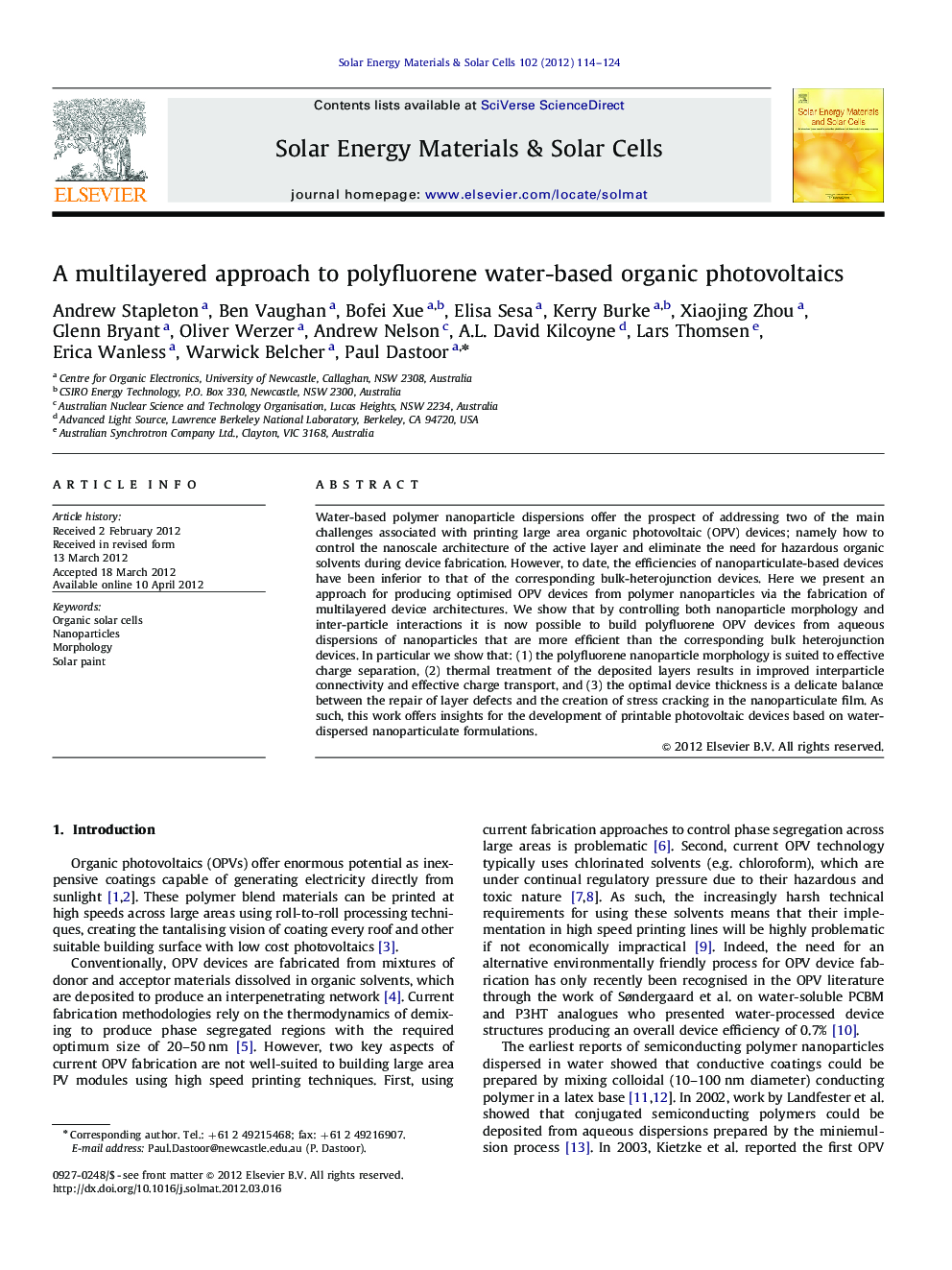| Article ID | Journal | Published Year | Pages | File Type |
|---|---|---|---|---|
| 78560 | Solar Energy Materials and Solar Cells | 2012 | 11 Pages |
Water-based polymer nanoparticle dispersions offer the prospect of addressing two of the main challenges associated with printing large area organic photovoltaic (OPV) devices; namely how to control the nanoscale architecture of the active layer and eliminate the need for hazardous organic solvents during device fabrication. However, to date, the efficiencies of nanoparticulate-based devices have been inferior to that of the corresponding bulk-heterojunction devices. Here we present an approach for producing optimised OPV devices from polymer nanoparticles via the fabrication of multilayered device architectures. We show that by controlling both nanoparticle morphology and inter-particle interactions it is now possible to build polyfluorene OPV devices from aqueous dispersions of nanoparticles that are more efficient than the corresponding bulk heterojunction devices. In particular we show that: (1) the polyfluorene nanoparticle morphology is suited to effective charge separation, (2) thermal treatment of the deposited layers results in improved interparticle connectivity and effective charge transport, and (3) the optimal device thickness is a delicate balance between the repair of layer defects and the creation of stress cracking in the nanoparticulate film. As such, this work offers insights for the development of printable photovoltaic devices based on water-dispersed nanoparticulate formulations.
Graphical abstractFigure optionsDownload full-size imageDownload as PowerPoint slideHighlights► Fabrication of multilayered polyfluorene nanoparticulate OPV devices. ► Nanoparticle morphology is suited to effective charge separation. ► Thermal treatment improves interparticle connectivity and charge transport. ► Optimal thickness is a delicate balance between layer defects and stress cracking. ► Devices are almost twice as efficient as the best corresponding BHJ devices.
